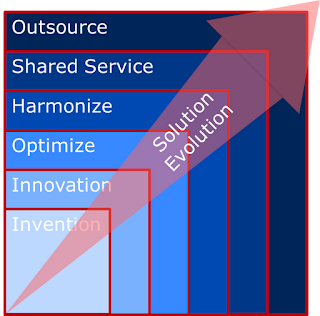Link: http://socialea.chickenbrain.de/2012/09/innovation-and-glue.html
From Social Enterprise Architecture
Again I fail to continue writing on the GLUE Journeys as promised but jump into another hot topic: Innovation. Actually I do not really think that it is new knowledge, but for whatever reason it seems to be hot. i personally utilize the knowledge Everett Rogers has provided us in his Diffusion of Innovations.
So why the hype around innovation? Following Rogers definition (innovation is “an idea, practice, or object that is perceived as new by an individual or other unit of adoption”) and his model (the first 2.5% to adopt to an innovation are innovators) I wonder what makes it so interesting that everyone wants to be associated to innovation. (The funny thing is, even if all of us want to be innovative only the fastest 2.5% will be innovators).
“Innovation distinguishes between a leader and a follower.”,
Steve Jobs (1955 – 2011)
Steve Jobs (1955 – 2011)
I believe part of it is tied closely to the success of Apple. Innovation is to me more a brand than something real. But given the fact that it is a real hype I give it also some focus. First of all in the GLUE Space I place Innovation into the GLUE Division Discovery.
Discovery supports the people to adopt innovations, again following Rogers definitions:
- Innovators
- Early Adopters
- Early Majority
- Late Majority
- Laggards
Due to the fact that it is so attractive to be innovative I now also observe some weird approaches, like using off-the-shelf-software not as intended but for something very different. In some cases that might be really innovative by bridging from one area of appliance to another, but in most cases this is just lack of common-sense advertised as out-of-the-box-thinking. Preaching for standards is a lost case against innovation evangelists.
By looking at Enterprise Architecture (not real EA) the Division Discovery is a core part to support the transition of the As-Is Architecture to the To-Be Architecture. As I have tried to point out in Enterprise Architecting Past, Future or Present there is no easy straightforward way (thank god, that secures my job), but here I take the more narrow minded approach around the Architecture Core Deliverables:
So what I think is that Enterprise Architects should lead in the transition from As-Is to To-Be and support the change. A Social Enterprise Architect should be equipped with the right tools at hand to support innovation but also the further adoption. Innovation alone is only a very small subset for Enterprise Architecture to support. And different techniques have to be applied for different stages of the solution:
- Everything starts as an invention (part of GLUE Develop Destination)
- Some inventions are innovative (part of GLUE Develop Discovery)
- Optimization is needed to reduce costs on each variant (First Develop Destination to optimize, then Develop Discovery to get it adopted)
- Harmonization as the next level of alignment is reducing the variants down to one
- Shared Service delivers the functionality for many out of a small amount of people
- Outsource delivers the functionality for the cheapest available price from the market
In my definition only one small area in this model is innovative and it is only one level on the solution evolution. All levels need to be supported by Enterprise Architecture and to make it even more complex the people who work in the different solutions must be taken into account. Any thoughts, comments? Feel free to contact me, I am happy to share knowledge, ideas, thoughts.


